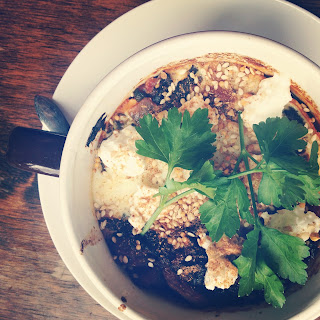Although it doesn’t feel
like it today, spring is fast approaching. To inspire for the months ahead, I
thought I’d share a few ways to spring clean your body to have you feeling
freshly cleansed come the change of season. A detox doesn’t have to be something we think of every now
and again when we start to feel a little off and in need of rejuvenation. I
believe that we should always be trying to detoxify not only our bodies, but
also our lives. Welcome new experiences and opportunities and become aware of
what is not serving you well anymore. Take active steps everyday to ensure your
body is in a constant state of flow and rid yourself of all things toxic.
Eat whole, organic foods By choosing to eat unprocessed, natural foods in their original
form, you are nourishing your body the way nature intended. By eating this way,
you can avoid the chemicals, additives and preservatives found in processed
foods.
Incorporate detoxifying foods The liver and kidneys act as the body’s filtration system. To aid
in cleansing these organs incorporate parsley, coriander, dandelion root,
licorice root, cayenne, turmeric, garlic, lemon, grapefruit, sea vegetables,
artichokes, beets, chlorella and milk thistle into the diet.
Drink plenty of water We are made up of approximately 70% water, so replenishing that
water is essential for every function in the body. Water moves energy
throughout the body and carries nutrients and oxygen to all cells.
Breathe properly Our bodies are
designed to release toxins through breathing by exhaling carbon dioxide, the
natural waste of the body’s metabolism. Breathing deeply and supplying the body
with enough oxygen, releases tension, relaxes the body and mind and brings
clarity. Slow down and focus on your breath.
Increase good gut bacteria The word ‘probiotic’ is a compound of two Greek words: “pro” to
signify promotion of and “biotic” which means life, and by this very
definition, probiotics affirm life and health. Having healthy gut flora is
important for digestive health as well as maintaining overall health. Include
probiotic rich foods such as yogurt, kefir, sauerkraut, miso, pickles, tempeh,
kimchi and kombucha tea.
Exercise Increases
circulation and moves lymphatic fluid. Metabolism speeds up, breathing
increases, you sweat, all of which help to dislodge and transport toxins out of
the body. Deep massage is also a good way to move lymphatic waste.
Add apple cider vinegar Alkalises the body and helps detoxify the liver. Make sure to
buy the raw, unfiltered, organic variety. Similarly, start each day with warm
glass of water with the juice of ½ a lemon.
Sip on herbal teas Teas are a
wonderful way to integrate mind-body medicine. Be guided towards herbs that are
appropriate for you and enjoy their therapeutic qualities. Green, black, white and oolong tea are
all high in antioxidants which to help neutralise toxins. Dandelion and nettle
have a diuretic effect, which help to flush the liver of toxins, reduce fluid
retention and aid digestion.
Eliminate toxins Caffeine,
alcohol, tobacco, and processed foods are some of the obvious ones, but
exposure to other hidden chemicals has a significant impact on the level of
toxicity in our bodies. Cleaning products, detergents, hair care products,
deodorant and cosmetics, just to name a few, contain an array of synthetic
ingredients, which all add up to create toxicity in the body. Become a smart
shopper, read labels, buy ethically and intelligently.
Dry body brush This technique
spreads energy through the chakras, opens the pores to release stored toxins, stimulates
circulation and softens deposits of hard fat below the skin and prepares them
for discharge.
Be grateful Remind yourself
of all the positive things in your life, notice the simple pleasures and
acknowledge everything you receive.
Eat Clay The molecules
in the clay contain a powerful magnetic energy, which can be used to attract
and hold several types of toxins, pulling the toxins from affiliated tissues
and into themselves. Dissolve about a tablespoon into water or juice and drink.
Alternatively, if eating clay doesn’t appeal to you, it makes an amazing
face/body mask.
Learn to meditate Achieving a
state of relaxation has been linked to higher levels of ‘feel-good’ chemicals
such as serotonin and to growth hormones that repair cells and tissues. It
lowers the heart rate, boosts immunity and enables the body to thrive.
Listen to your body People
sometimes confuse listening to the body with listening to the mind. The mind
governs “should” and “shouldn’t” thought forms that have the potential to
undermine the body’s natural instincts that work to keep you in a state of
balance. Connect to your body, trust it will keep you safe.
















